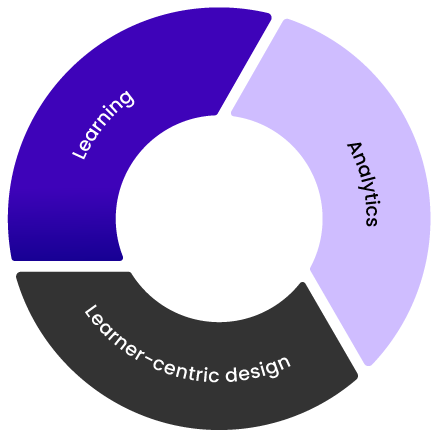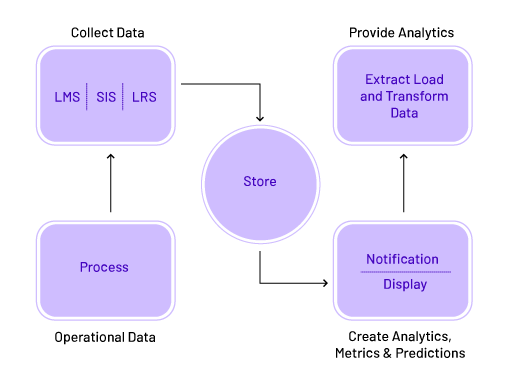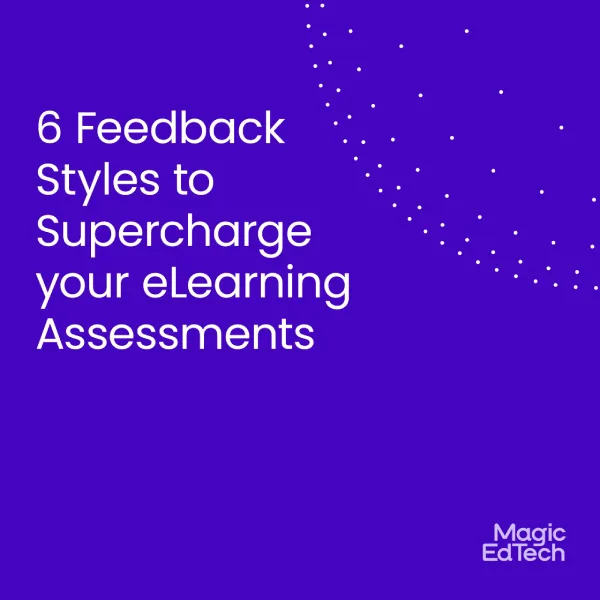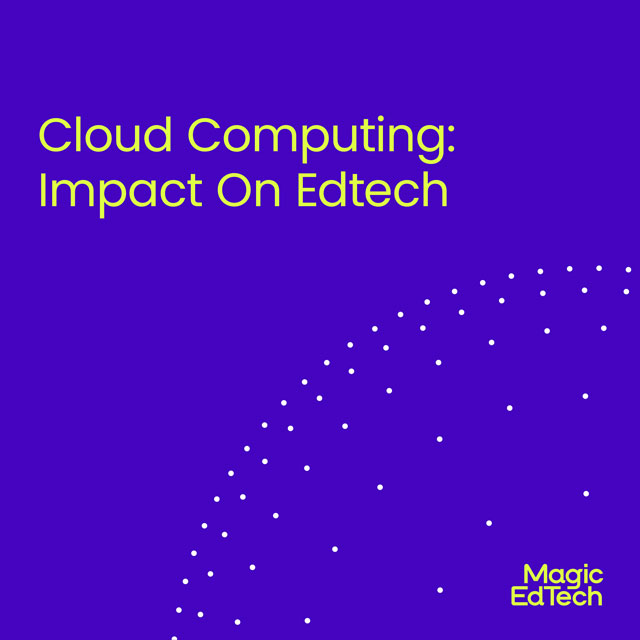The Best Ways to Use Learning Analytics in 2022
- 31 January, 2022
- Reading Time: 6 mins
The growth of the app and SAAS industry has been fueled by the availability of the internet on personal computers, handheld (mobile), and wearable devices. The emergence of a “digital life” is generating huge amounts of data across various industries, governments, and other areas. These factors have largely been responsible for propelling the growth of the analytics field like never before. Analytics are used to process and interpret data in a way that eases everyday lives.
The emergence of Learning Analytics
Education providers like universities, colleges, and schools have begun to use a variety of online learning and administrative tools and systems. These help improve the effectiveness of course and curriculum delivery and automate processes like library management, enrollments, attendance, etc. The dataset that lives in different systems or formats contains information about learners, learning activities, and learning context. Learner data on courses accessed, library books issued, assignments submitted, or online forum contributions provide a unique opportunity to understand learner behavior in a way that was not possible in the past through manual observation. Since the size of data is often huge, trying to make sense of it manually is simply not feasible.
Learning Analytics is an interdisciplinary field that sits at the intersection of Learning (education research), Analytics (statistics, visualization, data science, AI, ML), and Learner-Centric Design.

A formal definition of analytics as defined in 2011 first LAK conference described below:
“the measurement, collection, analysis, and reporting of data about learners and their contexts, for purposes of understanding and optimizing learning and the environments in which it occurs.”
How can Learning Analytics help?
Learning Analytics impact several key areas of the learning ecosystem like student success, course recommendation, personalized learning, curriculum & content design, etc. Outlined below are a few ways we can expect to see its application.
1. Learning Analytics to Boost Student Success
A few key metrics to measure the success of students are :
- Retention, completion & graduation rates.
- Improved academic performance like better grades.
- Higher student satisfaction.
A Learning Analytics system can help students succeed by providing timely information to students and teachers alike.
- Using data on what courses are accessed and how much time is spent on these can help educators understand a student’s learning patterns and provide early information on how engaging online course content is.
- By clubbing students with similar behavior patterns into groups, learning analytics can provide accurate performance predictions on grades, retention, and course completion.
- It can give administrators and educators key insight and enable them to take the right corrective measures.
2. Provide the Right Course Recommendations through Data
Recommendation engines can help reduce information overload by showing learners only relevant course items. Educational systems are slowly beginning to embrace the recommendation system technology that is widely popular in eCommerce and other industries.
Few use cases for recommendation engines in education are:
- Learners can receive better insight on what courses to take based on their current search patterns and keywords, and even interests in some cases.
- Recommendation engines can help colleges, universities, and MOOCs display courses that students might not even have looked up but which they may find interesting based on their search patterns and industry trends.
Several universities and MOOCs offer many options for students to pursue. Deciding on the best courses and their sequence is a complicated and time-consuming process. Course recommendation systems can immensely help students in the decision-making process by proposing personalized courses and their sequences.
3. Develop Personalized Learning Paths
Personalized (Adaptive) learning systems provide an alternative to the “one-size-fits-all” approach by recommending different teaching resources and timelines to students based on their skill level and abilities. It helps avoid the too easy or too hard notion that students typically face.
Adaptive Learning can bring the following benefits
- Learning analytics can help reduce a teacher’s load by giving them the information they need to deploy the best teaching strategies.
- By automatically suggesting resources and content that appeals to students, analytics can help student motivation and engagement.
- Based on learner comprehension data, analytics can help identify what content would be better taught through practical, hand-ons experiences and can enable skill-based learning to boost the learner’s comprehension and confidence.
- The right analytics can help precise, task-specific feedback to assist with learner improvement.
- Learner behavioral patterns can be the key to developing individualized learning schedules.
- Learning analytics can also help regulate cognitive load and improved knowledge retention.
4. Bring Improvements to Curriculum Design
Learning Analytics can help course creators and developers understand the effectiveness of specific elements in the curriculum they are designing.
For example, a usage report can help in identify which parts of the course content receive high and low interaction from students. These metrics could be used to determine how to supplement low-interaction items with highly engaging treatments such as learning videos, AR objects, or animations.
Technologies for Learning Analytics
In the educational environment, data is consistently generated by operational systems like LMS, SIS, ERP, or specialized systems like Learning Record Storage (LRS). This data is comprised of students’ learning activities, attendance, identity & profile, forum activities, etc.
There are a few important processes for a Learning Analytics system that require the use of various technologies.

- Data Extraction & Loading – The first step is to bring data from multiple sources to a single database or data warehouse.
- Transformation and Storage – Once the data is loaded we transform the data into a structure that is tailored for the Learning Analytics.
- Processing – Once data is collected and stored we process the data for analytics, metrics, and prediction. It usually involves multiple technologies depending on the need.
- Alerts & Notifications – Once analytics are available they need to be delivered to stakeholders in a timely manner using mobile notifications or email services.
- Display – Displaying the analytics through the dashboard, data stories, and visualizations.
Methodologies for Learning Analytics
In Learning Analytics we apply the following methodologies to uncover the past and predict the future. These methodologies are inherited from general Analytics concepts.
- Descriptive Analytics – Using descriptive analytics we deep dive into the past to find out the metrics and reports. For e.g. Analysis of student’s time spent on each question of an assessment.
- Diagnostic Analytics – Using diagnostic analytics we try to find out the possible reason for some causation using correlation and data mining. For e.g. Finding less time spent on a topic lead to a lower score in assessment.
- Predictive Analytics – Predictive Analytics is Machine Learning model-based prediction on key performance indicators. For e.g. Predicted grade in a specific course.
- Prescriptive Analytics – Prescriptive Analytics provides actionable insights to improve the existing or predicted situation. For e.g. Recommending students a new course rather than continuing an existing course where the success rate seems low.
In Conclusion
Introducing a Learning Analytics system for students, teachers, administrators, and curriculum designers will help them achieve a better outcome. Learning analytics leverage technology to deliver valuable insights which is not possible through manual processes. In an era of hybrid or blended learning environments, we are generating a huge amount of data related to learners’ activities. Applying effective learning analytics techniques to these data can help bring a personalized learning experience.



